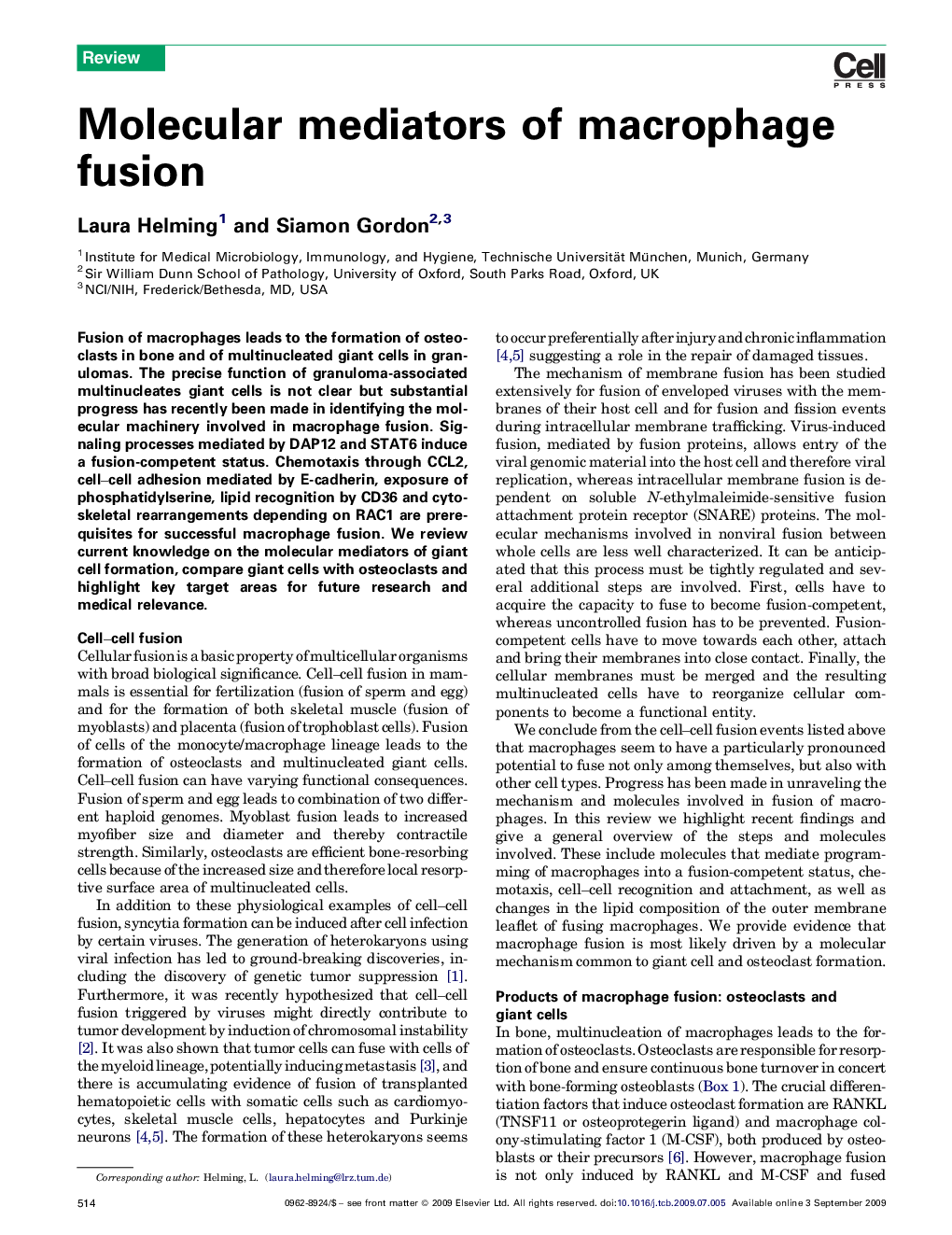| Article ID | Journal | Published Year | Pages | File Type |
|---|---|---|---|---|
| 2204909 | Trends in Cell Biology | 2009 | 9 Pages |
Fusion of macrophages leads to the formation of osteoclasts in bone and of multinucleated giant cells in granulomas. The precise function of granuloma-associated multinucleates giant cells is not clear but substantial progress has recently been made in identifying the molecular machinery involved in macrophage fusion. Signaling processes mediated by DAP12 and STAT6 induce a fusion-competent status. Chemotaxis through CCL2, cell–cell adhesion mediated by E-cadherin, exposure of phosphatidylserine, lipid recognition by CD36 and cytoskeletal rearrangements depending on RAC1 are prerequisites for successful macrophage fusion. We review current knowledge on the molecular mediators of giant cell formation, compare giant cells with osteoclasts and highlight key target areas for future research and medical relevance.
